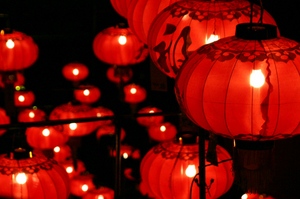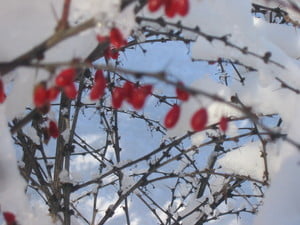“Seeing it once is better than being told 100 times.” written by Zhou Chonggou. That is exactly why on February 7th, 2008, parents and educators should take a hands-on approach teaching children this year about Chinese New Years. It is not only important to recognize the holiday but also live it.
Now, I am sure not everyone can voyage overseas for the holiday but that should not hinder anyone from taking part in this festivity. The challenges to overcome are atmosphere, food and entertainment.
Challenge #1 Atmosphere: Atmosphere can be a great challenge to many families outside of China. One important rule when celebrating New Years is not about location; rather it is planning and execution. As any holiday, New Year’s has some traditional customs that have been passed down from generation to generation through Chinese families.
Oranges/tangerines: Luckily one of the most famous customs around China is having oranges/tangerines as a decoration during the holiday. The word for orange in Chinese sounds much like the word for luck; hence oranges are a symbol of wealth and luck in the New Year. Thankfully, oranges are grown in Southwestern and Southeastern states in America right now, therefore the price is very reasonable. Place a small batch of oranges in a decorative bowl in your household; it is just that simple.
Blooming Plants: Plants are thought of as an important commodity at this time of the year. Since the Chinese New Years is also referred to as the Spring Festival, it is only befitting that re-birth be shown through blooming flowers. Right now tulips and orchids are blooming in stores and have a reasonable price tag. It is more than fitting to purchase these plants to symbolize re-birth in the Chinese New Years.
Calligraphy Scrolls: Among Asian scholars such as me, these scrolls are best noted for containing “Poetic Couplets”. Poetic Couplets are simply a set of two lines placed together to make a poem verse. It is common to see these scrolls placed not only inside the household but also on the main entrance door to a house.
Challenge #2Food: Food is ultimately one of the major parts of the Chinese New Years festivity; hence, it should be highly incorporated into your families cultural celebration. There are many recipes to choose from over the internet and especially on associated content such as the Chinese spring roll. Some particular ingredients to include, following custom:
Dried Bean Curd: It is a homonym for filling wealth and happiness in ones’ life.
Bamboo shoots: Stated by my Chinese friends, sounds like “wishing that everything would/can be well” when said in Chinese so it is a common New Year food.
Jau gok: It resembles the ancient Chinese gold coin.
Noodles: Practiced year-round, long noodles represent longevity and long life.
Non-white Foods: White is an unlucky color so anything that is white should not be eaten on this day.
Challenge #3Entertainment: Entertainment is important to engage younger generations into this new holiday, to encourage the cultural influences of this important Asian holiday.
Paintings: Yanliuqing paintings have been used from around the 1500-1600’s in China as a popular Chinese New Year painting. These painting commonly portray spring with prismatic blooming flowers and spring birth of butterflies. Mainly from a small town in China called Yangliuqing, it is hard to find them in stores other than within the borders of China. These paintings can be recreated though by your hand-craftiness, families with children can captivate their attention by painting their own masterpieces. Remember to incorporate spring influenced items such as flowers, butterflies and birds. In addition, this year is the Year of the Rat; hence, it is appropriate to add a rat in a photo to symbol the zodiac animal.
Calligraphy Scrolls: Many Chinese families entertain the popular tradition/custom of writing scrolls or modern day posters with traditional calligraphy. Families not versed in traditional Chinese calligraphy can freely have children write their wishes for the New Year by the everyday household item of a pen or pencil. A good website that represents these poetic couplets for children is on Giggly Poetry. A traditional Chinese New Year’s poetic couplet to be placed on the doorway is usually written in black ink on a red background. In modern day celebrations, many families and businesses have chosen to skip the traditional poetic couplets and write forms of hopes and dreams for the next year. For instance, it is common to write the character for luck and place it upside down on the front door. Smaller children will write about success in school or to have a happy life. There are not really any specific rules, so have fun with your children and try something new.
Movies: There are a lot of Chinese films in the international cinema market to be viewed with subtitles at home. Not only can your children hear the foreign language but maybe also learn a little on the way. Since I have studied Asian studies for about ten years, I have seen many different Chinese films however here are my favorite to be viewed about this time of year. “Farewell My Concubine”; “Crouching Tiger, Hidden Dragon”; “Still Life”; “Comrades, Almost a Love Story”; “Eat Drink Man Woman”; “Billy and Benboo” (kids) and “Love on a Diet”.
After studying China for over ten years, I have an extreme interest in educating others in the fascinating history of this country. As the largest country for international trade, it is important to educate younger children in Asia to shrink the image of China being “exotic” and bring it closer to the modern everyday. Take the time this year to learn about China and celebrate the wonderful holiday of the Chinese New Year and celebrate the “Year of the Rat”.




